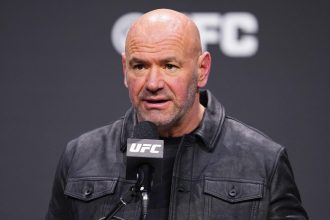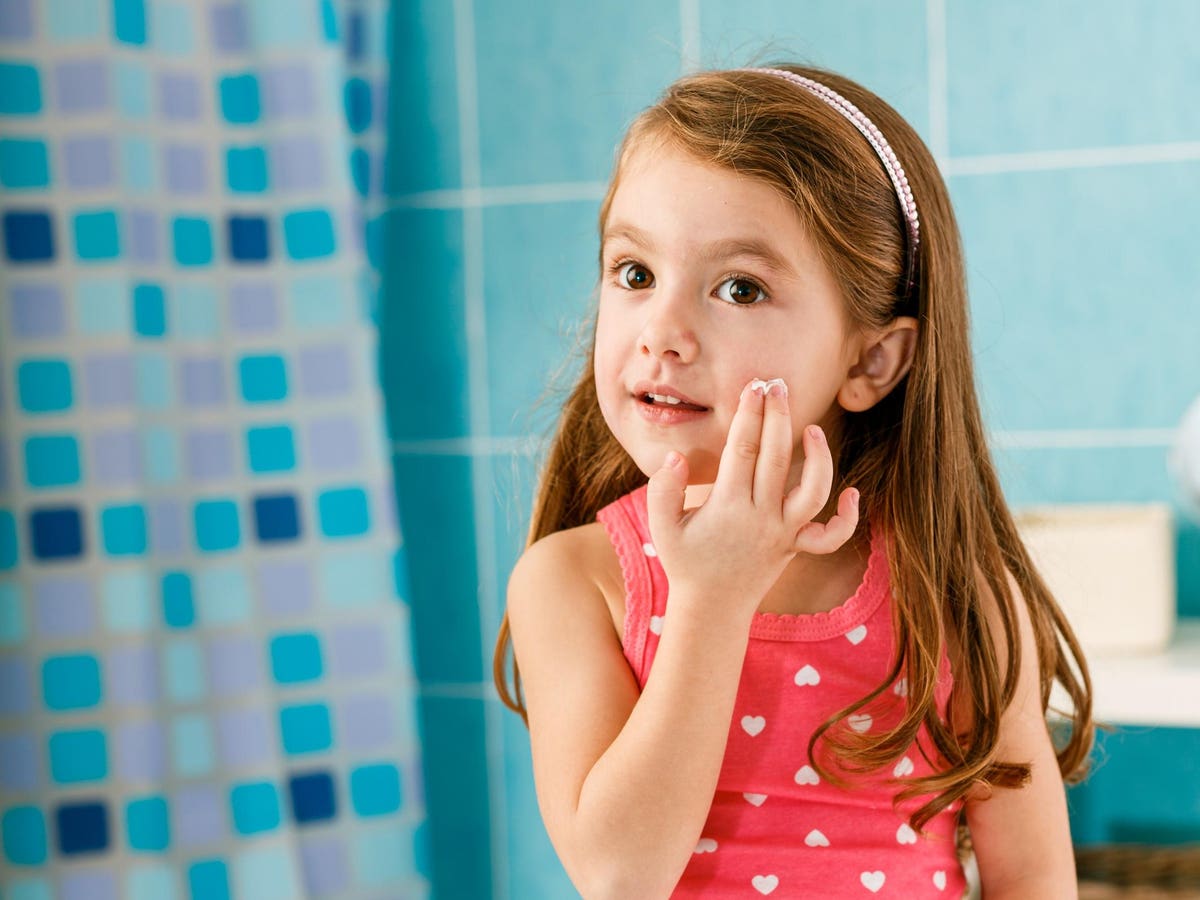Preteen girls taking an interest in skincare may initially sound like a fun, healthy trend. And it’s big business: in 2023 American families with tweens aged 6 to 12 purchased 27.2% more skincare, while families with teens aged 13 to 17 purchased 28.6% more.
But when girls as young as 8 show up at doctors’ offices with allergic reactions, rashes and irritant dermatitis because they are using anti-aging products meant for 40-year-old women, we have a problem. Driven by the viral #SephoraKids social media trend, little girls are harming their skin with anti-aging products. And the harms don’t stop there: both body image and how girls form community are also being influenced by the skincare trend.
Social Media And Anti-aging Products For Little Girls
How can an 8-year-old think her skin needs highly irritating products like tretinoin or ferulic acid for wrinkles she doesn’t have?
Initially, watching skincare videos from kid skinfluencers is about fun and community, but more girls are becoming aware of the dangers. Sisters Ellie, 15, and Noe, 14, Etheridge told WATE 6 that they enjoy trying new skincare products. “It’s fun and it makes you feel clean and good about yourself. But sometimes you can get carried away and take that too far,” Ellie.
The video below shows social media clips of these young skinfluencers, and they are shockingly young. In order to avoid encouraging these skinfluencers, I have not linked directly to their social media.
For other girls, the anti-aging social media trend is no fun at all. At age 10, Scarlett Goddard Strahan was so worried about getting wrinkles that she and her friends watched hours of skinfluencers on TikTok and Youtube. In order to achieve a flawless, glowing complexion, Scarlett used facial cleansers, mists, hydrating masks and moisturizers. But these products were not made for her young skin, and her skin began burning and blistering, leaving marks that lasted months.
“I didn’t want to get wrinkles and look old,” she told the Associated Press. “If I had known my life would be so affected by this, I never would have put these things on my face.”
How Anti-aging Products Can Harm Young Skin
What 8-year-old social media skinfluencers don’t know is that they are spreading harmful misinformation to other kids their age.
“When kids use anti-aging skin care, they can actually cause premature aging, destroy the skin barrier and lead to permanent scarring,” Dr. Brooke Jeffy, a Scottsdale, Arizona, dermatologist told the AP.
One of the reasons young skin looks young — plump, moisturized and smooth — is because it has good barrier function. But when kids use irritating anti-aging products, they can dry out their skin, create breaks in the barrier and set off redness and irritation.
This breakdown in the barrier then lets in outside substances and microbes, and the immune system goes wild. Immune cells release chemical messengers to promote inflammation. The process recruits fibroblasts, the cells that lay down scar tissue.
Now here is where things really scary. One of the key processes in skin development from infancy to adulthood has to do with collagen. As anti-aging gurus will tell you, collagen is a large molecule that help gives skin its firm, smooth appearance. In infants and young children, the skin is full of small bundles of collagen. As the skin transitions to adulthood, fibroblasts work to cross-link those collagen bundles.
During inflammation, such as wound-healing and scar formation, fibroblasts lay down relatively disorganized structures. Now imagine activated fibroblasts in the skin of a young girl’s face, potentially cross-linking collagen bundles prematurely and in a disorganized way. And if the girl keeps using the irritating products, prolonged inflammation is known to cause ongoing inappropriate fibroblast activity.
How Anti-aging Videos Can Harm Young Minds
Young skinfluencers are everywhere, and some girls are finding that bonding over skincare routines has become a key price of entry to community. According to 14-year-old Mia Hall, who saves her $20-a-week allowance to buy products at Sephora with friends, skincare was the only way she felt she could fit in.
“It’s like a trance. You can’t stop watching it,” Mia told the AP about the social media skincare videos. “So when they tell me, ‘Go buy this product’ or, ‘I use this and it’s amazing,’ it feels very personal. Getting what they have makes me feel connected to them.”
But this product peddling has its dark side: Mia feels jealous and insecure when she sees other girls her age who look very pretty or have an amazing life.
Charlotte Markey, a Rutgers University psychologist and author of The Body Image Book For Girls, told the AP that detailed beauty tutorials plant in vulnerable young girls the idea that skincare is a never-ending project to get started on now. The message is, you are not OK the way you are.
Protecting Young Girls From Skinfluencers
Like most problems caused by social media, protecting young girls from the harmful misinformation peddled by skinfluencers requires legal protections, parental involvement and correct information.
Legal Efforts To Protect Young Girls From Anti-Aging Products
California assemblymember Alex Lee of San José is currently trying for the second time to get a bill passed banning the sale of anti-aging skincare products for shoppers under the age of 18.
“The beauty industry is cashing in on the ‘Sephora kids’ phenomenon where children are buying and using adult anti-aging products,” Lee warned in a statement. “Kids don’t need anti-aging products. The beauty industry knows that.
“We have to stop the beauty industry from exploiting our youth,” Lee added.
Parents Can Protect Their Daughters From Social Media
Skin damage driven by social media skincare videos is just the latest of many dangers to girls on social media. Parents have many reasons to take an active role in protecting their daughters. It can be hard to know where to start, but in a prior Forbes article I detailed three ways parents can protect their kids from social media’s mental health effects.
Correcting The Record On Anti-Aging Products And Kids
Many parents assume that the products their children are using have been tested for safety. However, both the U.S. Food and Drug Administration and European Medicines Agency do not require testing of cosmetic products such as anti-aging creams on children. Such testing is only required when a product is specifically labeled as a made for children.
Therefore, doctors are trying to get the word out to the public about the dangers of anti-aging skincare products for kids. The Connecticut Children’s Medical Center, UCLA Health Reports and the British Association of Dermatologists are just a few of the health experts warning that children who use anti-aging products could experience irreversible skin problems.
A Pediatrician’s Skincare Advice For Kids And Teens
When it comes to their skin, kids and teens need only simple, inexpensive skincare routines. As a pediatrician, here’s what I recommend (I have no financial connection to these brands):
For kids without acne:
1. A gentle cleanser such as the inexpensive drugstore brand Cetaphil cleanser or glucoside foaming cleanser from The Ordinary.
2. A light, nonirritating moisturizer such as drugstore brand CeraVe’s AM and PM facial moisturizers. Bonus: the AM version contains sunscreen.
3. If using a moisturizer without sunscreen, apply a light sunscreen.
For kids with acne:
1. An over-the-counter benzoyl peroxide face wash, such as Differin’s cleanser.
2. An adapalene gel, such as the one from Differin.
3. Follow with a light moisturizer and sunscreen.
If children need more help with their skin, check with your pediatrician or dermatologist before you head to beauty supply stores.
Update, 2 p.m. EST: Sephora has been contacted for comment.
Read the full article here





